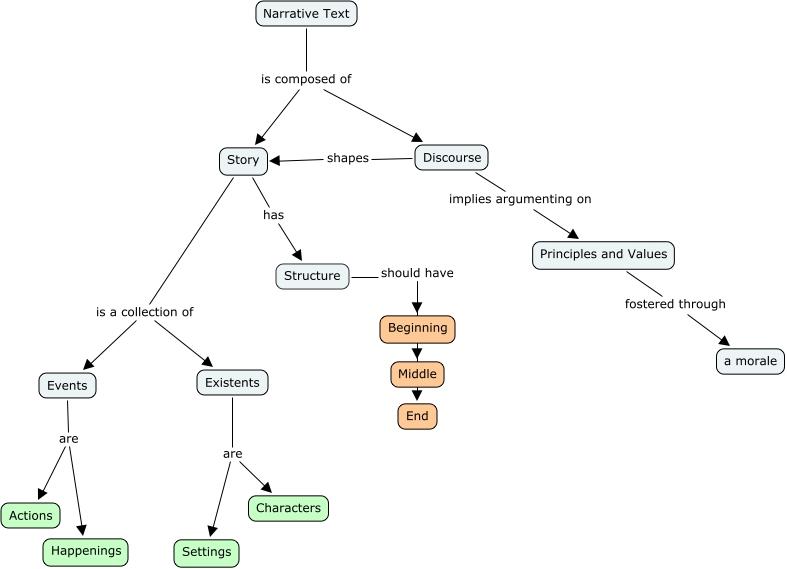
теор.грамматика / Лекция 6
.docxЛекція 6: Text and discourse as a subject of linguistic study
LECTURE 6: TEXT AND DISCOURSE AS A SUBJECT OF LINGUISTIC STUDY
LECTURE 6: TEXT AND DISCOURSE AS A SUBJECT OF LINGUISTIC STUDY
Since its introduction to modern science the term 'discourse' has taken various, sometimes very broad, meanings. Originally the word 'discourse' comes from Latin 'discursus' which denotedDiscursus – derived from discurro ‘to run in different directions, to spread about, to fall apart’ Thus understood, however, discourse refers to too wide an area of human life, therefore only discoursefrom the vantage point of linguistics, and especially applied linguistics, is explained here.
There is no agreement among linguists as to the use of the term discourse in that some use it in reference to texts, while others claim it denotes speech which is for instance illustrated by the following definition: "Discourse: a continuous stretch of (especially spoken) language larger than asentence, often constituting a coherent unit such as a sermon, argument, joke, or narrative" (Crystal 1992:25). On the other hand Dakowska, being aware of differences between kinds of discourses indicates the unity of communicative intentions as a vital element of each of them. Consequently she suggests using terms 'text' and 'discourse' almost interchangeably betokening the former refers to the linguistic product, while the latter implies the entire dynamics of the processes (Dakowska 2001:81). According to Cook (1990:7) novels, as well as short conversations or groans might be equally rightfully named discourses.

M. Foucault: discourse is a multitude of utterances belonging to the same formation.
Utterance is not verbal, not liguistically shaped sequence of signs, but a segment of human knowledge and a part of discourse practice.
Discourse embraces all possibilities for creating certain utterances or actions (Foucault’s ‘discoursepractice’ (non)-verbal)); it is maximally widely understood: extralinguistic factors are of primary importance in distinguishing the nature of discourse, the linguistic factors being secondary.
Extralinguistic factors: communicational situation, cultural-ideological environment where the communication takes place.
Seven criteria which have to be fulfilled to qualify either a written or a spoken text as a discoursehave been suggested by Beaugrande (1981). These include:
-
Cohesion - grammatical relationship between parts of a sentence essential for its interpretation;
-
Coherence - the order of statements relates one another by sense.
-
Intentionality - the message has to be conveyed deliberately and consciously;
-
Acceptability - indicates that the communicative product needs to be satisfactory in that the audience approves it;
-
Informativeness - some new information has to be included in the discourse;
-
Situationality - circumstances in which the remark is made are important;
-
Intertextuality - reference to the world outside the text or the interpreters' schemata;
Nowadays, however, not all of the above mentioned criteria are perceived as equally important indiscourse studies, therefore some of them are valid only in certain methods of the research (Beaugrande 1981, cited in Renkema 2004:49).
Links within text / discourse
Links in discourse studies are divided into two groups: formal - which refer to facts that are present in the analyzed text, and contextual - referring to the outside world, the knowledge (or schemata) which is not included in the communicative product itself (Cook 1990:14). By and large five types of cohesive devices are distinguished, some of which might be subdivided:
-
Substitution: in order to avoid repeating the same word several times in one paragraph it is replaced, most often by one, do or so. So and do in its all forms might also substitute wholephrases or clauses (e.g. "Tom has created the best web directory. I told you so long time ago".)
-
Ellipsis: it is very similar to substitution, however, it replaces a phrase by a gap. In other words, it is omission of noun, verb, or a clause on the assumption that it is understood from the linguistic context.
-
Reference: the use of words which do not have meanings of their own, such as pronouns and articles. To infer their meaning the reader has to refer them to something else that appears in the text (Tom: "How do you like my new Mercedes Vito?" - Marry: "It is a nice van, which I'm also thinking of buying".).
-
Conjunction: specifies the relationship between clauses, or sentences. Most frequent relations of sentences are: addition (and, moreover e.g. "Moreover, the chocolate fountains are not just regular fountains, they more like rivers full of chocolate and sweets."), temporality ( afterwards,next e.g. "He bought her perfume at a local perfume shop and afterwards moved toward a jewelry store.") and causality ( because, since).
-
Lexical cohesion: denotes links between words which carry meaning: verbs, nouns, adjectives. Two types of lexical cohesion are differentiated, namely: reiteration and collocation. Reiteration adopts various forms, particularly synonymy, repetition, hyponymy or antonymy (. Collocation is the way in which certain words occur together, which is why it is easy to make out what will follow the first item.
It is clear from the analysis of written language that when people produce discourse they focus not only on the correctness of a single sentence, but also on the general outcome of their production.
